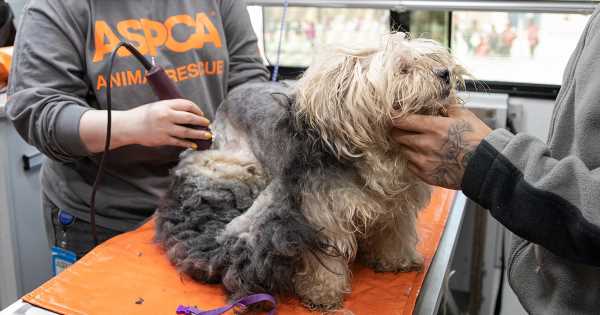
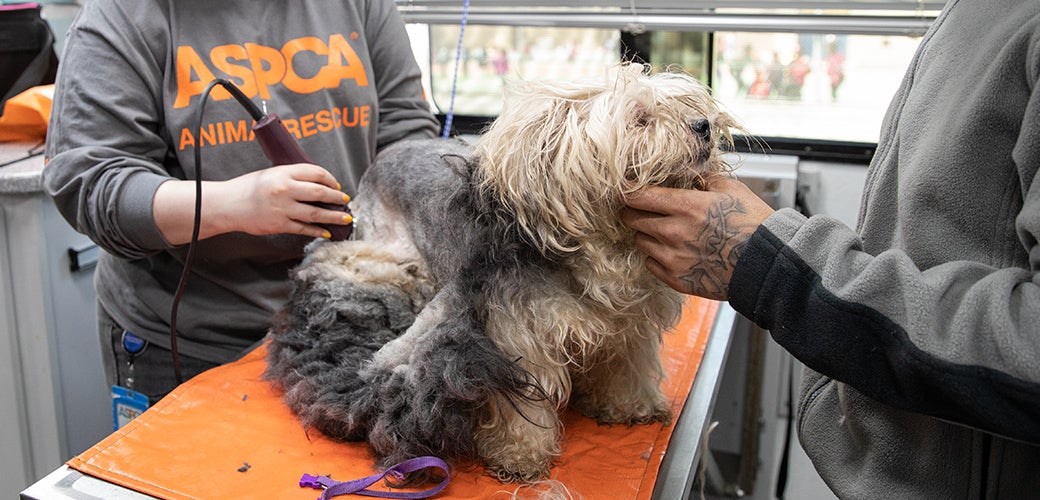
On March 25, Joshua R. noticed an ASPCA vehicle outside his Bushwick, Brooklyn apartment. The vehicle was part of an ASPCA pilot project offering grooming services to area residents.
Coincidentally, Joshua’s nine-year-old Yorkshire Terrier, Chuchi, was badly in need of a shave. His hair had grown long and was beginning to show signs of matting. Joshua brought Chuchi into the vehicle and watched as the ASPCA’s Grooming Specialist, Paisley Manga, clipped and shaved his dog.
When Joshua mentioned he used human hair clippers on Chuchi, Paisley demonstrated how to use dog clippers to give Chuchi a better cut. Paisley also gave Joshua a complimentary grooming kit including a hair clipper, scissors, a brush and a fine-tooth comb.

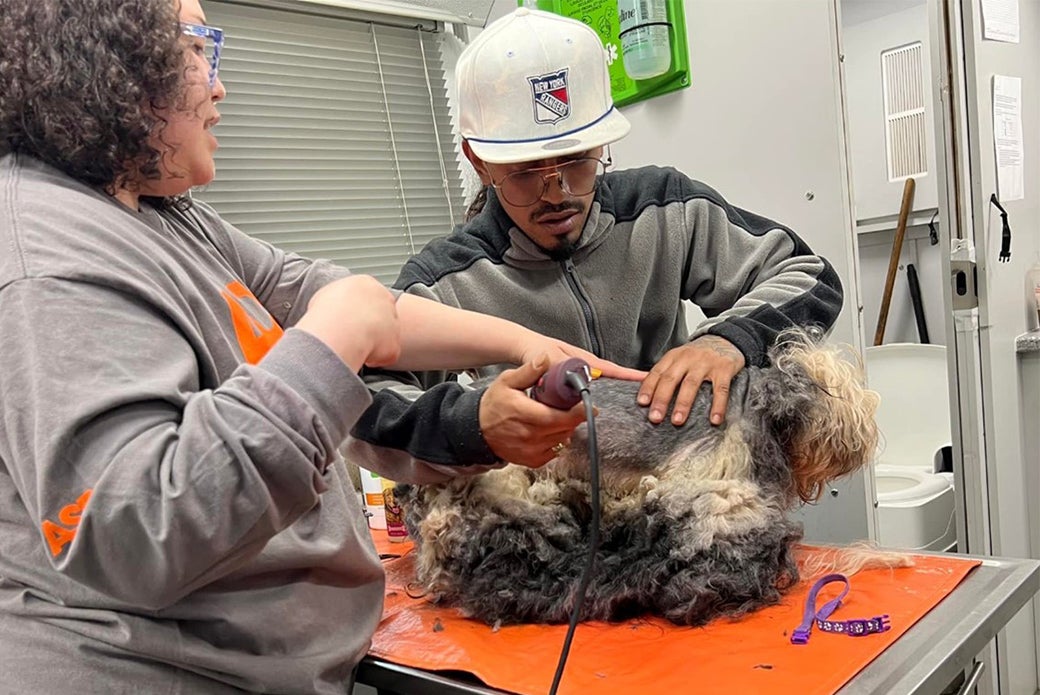
Joshua was grateful for the information and supplies and committed himself to taking better care of Chuchi’s coat.
“Pets are like family,” Joshua says. “You’ve got to stay on top of it.”
Thinking Outside the Box
The grooming idea came about when a severe veterinarian shortage that started during the COVID-19 pandemic led to the ASPCA reducing mobile services.
“We had to find a way to operate around the vet shortage,” says Roldcherstone “Rowe” Coutard, Client Operations Manager for the ASPCA Community Medicine team. “I asked myself, ‘How could we still make use of our mobile vehicles and team? Could we implement some of the same services we provide at our stationary clinics that do not require a vet?’ I like to think outside the box.”
After speaking with some of his Community Medicine and Community Engagement colleagues, Rowe conceived the mobile grooming idea.
Putting the Idea Into Action
The work started with NYPD and neighborhood coordination officers from public housing helping to secure parking for ASPCA vehicles in locations with limited or no grooming services available.
“Working with trusted partners who already have strong community ties, we can connect with pet owners that need our services and learn about families that may benefit from in-home visits so we can provide more comprehensive support,” says Erin Earley, Director of Community Engagement. “It also gives us the chance to promote other services, including urgent medical care, spay/neuter surgeries and vaccines.”


The ASPCA hosts an appointment-based grooming event for dogs every Friday, spearheaded by Community Engagement Coordinators. (Cat grooming appointments take place at the ASPCA’s two stationary Community Veterinary Clinics in the Bronx and Brooklyn.)
The team can accommodate 14 to 20 pets per event and as of August 1, 2022, has seen 531 pets, mostly dogs. Now working through a backlog, the team will continue its Friday service events through November 2022.
Teaching Residents How to Care for Their Pets
Lisa Kisiel, Manager of Casework, Training and Events for Community Engagement, says some clients don’t realize how often they should be getting their dogs groomed.
“We’re getting ahead of it before it can get worse,” Lisa says. “And we’re teaching people how to groom their pets themselves, that most clients will only need the service one time.”
“By teaching clients to shave, clip and trim their dogs’ nails, we’re also promoting a good quality of life for their pets,” says Rowe.

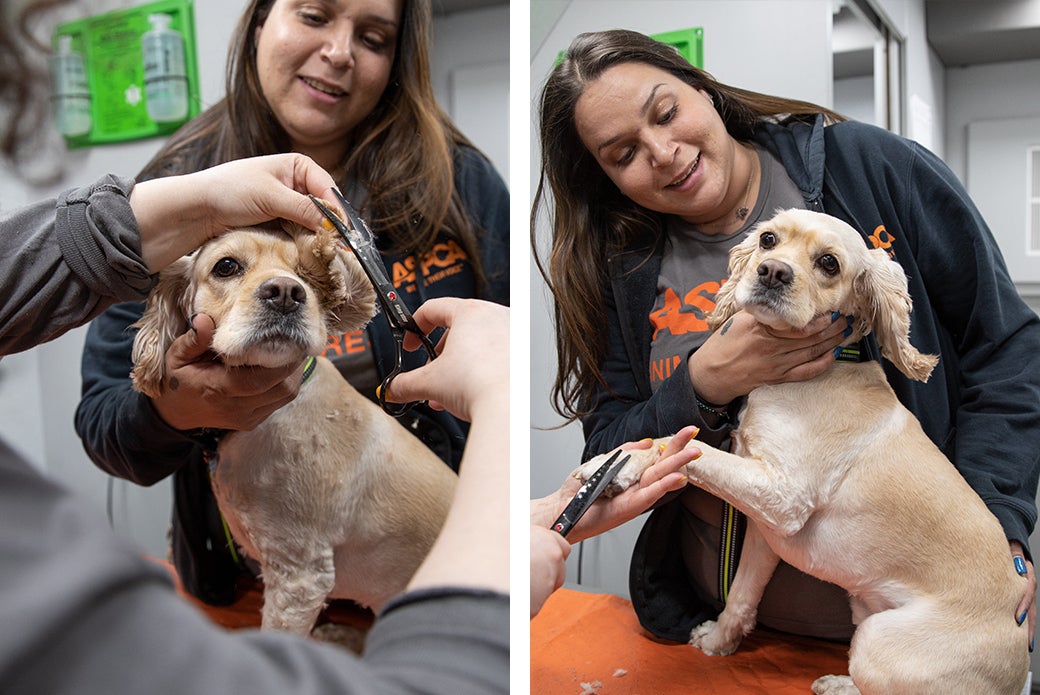
Lady, a two-year-old cocker spaniel, was also recently groomed by the ASPCA.
“I used to take Lady to a professional, but it gets expensive,” says Marivel S., Lady’s pet parent. “I try to keep her clean and looking nice, so it was nice to have someone show me how. Grooming is such an important part of keeping dogs healthy.”
The Importance of Grooming
A February 2022 grooming practices study using data from five ASPCA programs in NYC showed that over 13% of the ASPCA-NYPD Partnership’s cruelty cases involved general hair matting concerns and strangulating hair mat wounds. It also revealed that four percent of ASPCA Community Medicine appointments and six percent of ASPCA Animal Hospital veterinarian appointments involved grooming-related services.
Dogs who are improperly or infrequently groomed can eventually experience severe health problems including skin infections, strangulating hair mats and restricted and painful movement (caused by dense hair mats and overgrown claws).

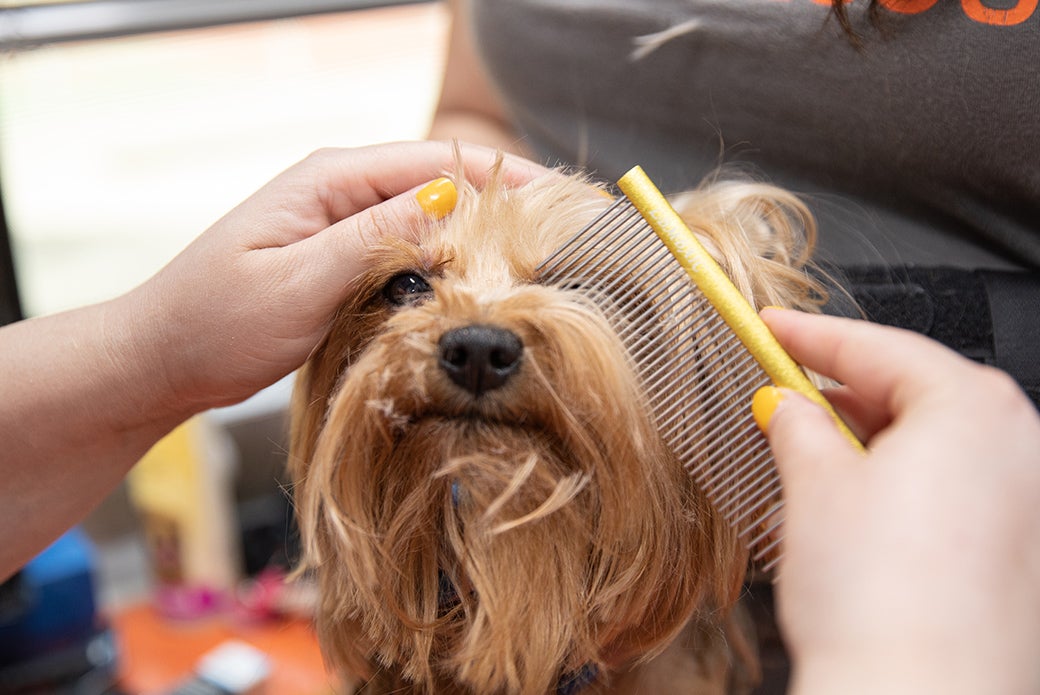
Accessible grooming options, like the ASPCA program, are valuable because pet care services in underserved communities are often unaffordable or geographically inaccessible—a challenge that can result in pets being rehomed or relinquished. Better access to even basic veterinary care keeps pets and people together.

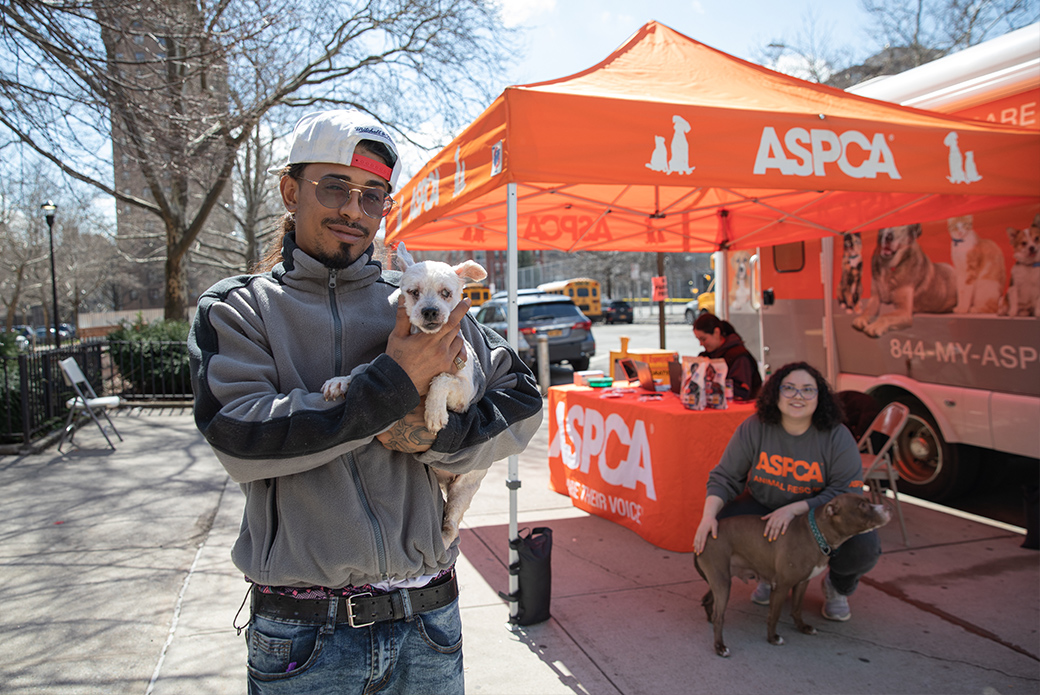
‘Face, Feet, Fanny’
What are the most important areas on an animal to groom?
“Face, feet, fanny,” says Paisley, a certified groomer who joined the ASPCA in 2019. “That means that, at minimum, we clean each dog’s face, belly, and bottom.”
With help from a senior veterinary assistant, Paisley is also adept at animal handling techniques.

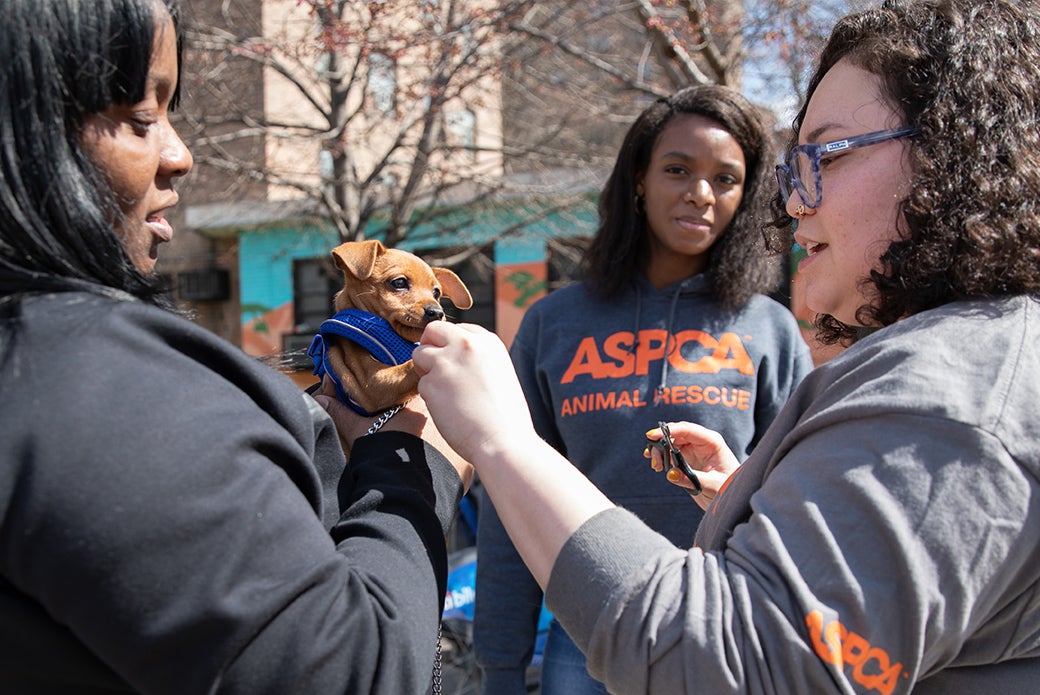
“It’s easy for pet parents to give up when your animal isn’t cooperating,” she says. “But if you’re handling them properly, it boosts your confidence. YouTube videos are one thing but having the client with me in person is even better.”
Another of Paisley’s clients was a cockapoo mix named Theodore, whose pet parent had trouble grooming him. The pet parent’s family was on the brink of relinquishing Theodore to a shelter because they couldn’t find a groomer. In April, they brought Theodore to the ASPCA mobile clinic.
“We fit Theodore in—he was matted and thrashing—very stressed,” Paisley says. “With some sedation, we were able to shave him. Once he woke up, he felt much better. He was happy and loving. And his family felt better, too.”

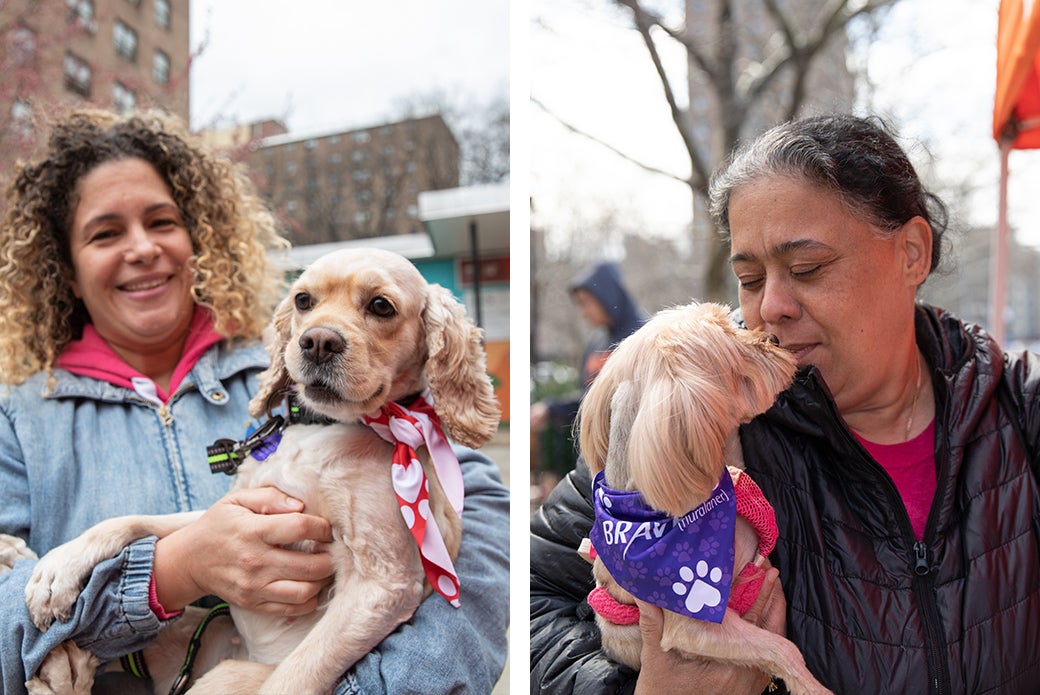
Chuchi, Lady, and Theodore—three very different dogs—are now happier and healthier thanks to a spark of innovation and a swell of compassion.
Source: Read Full Article
